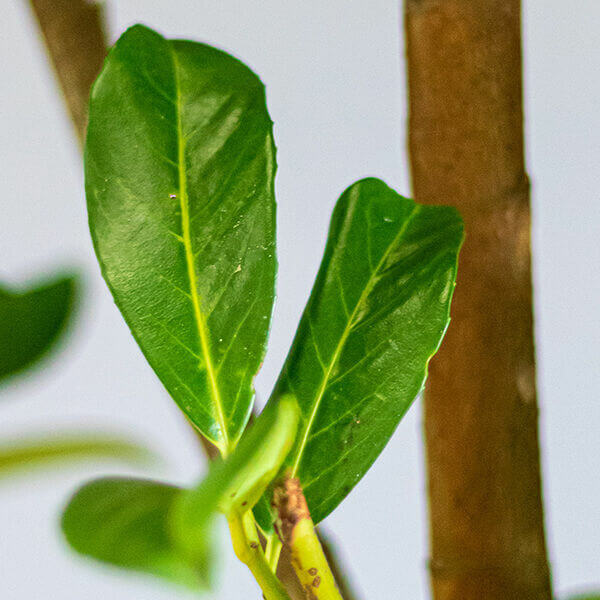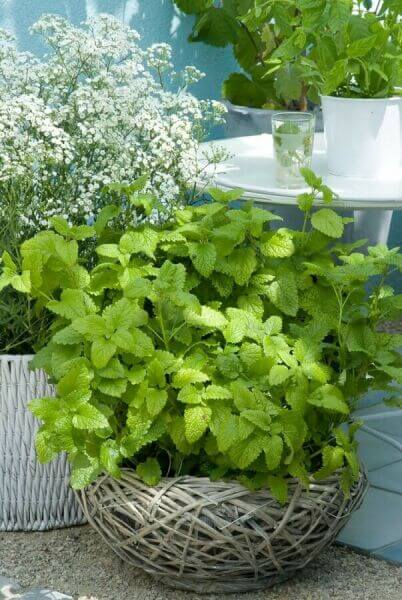Hedging Plants For Attracting Birds
Hedging Plants For Attracting Birds
Blog Article
Best Hedging Plants For Green Dividers
Improve your garden's allure with lush hedge ranges such as Yew (Taxus), Thuja, Laurel, Photinia, and Bamboo, celebrated for their structural stability and environmental advantages.
Yew and Thuja supply evergreen protection and winter strength, while Laurel offers fast growth and broad, aromatic leaves.
Photinia includes seasonal charm with its dynamic red foliage, and Bamboo provides a low-maintenance, serene atmosphere.
These hedges enhance air quality, reduce noise, and develop tranquil, private areas.
Proper planting, spacing, and maintenance guarantee energetic growth and environmental consistency.
Check out how these lush varieties can elevate your garden's charm and wellness.
Key Takeaways
Transform Your Garden With Lush Hedge Varieties
- Select Yew for its thick, evergreen development and unparalleled longevity.
- Choose Laurel for its quick development and broad leaves, ensuring fast privacy.
- Select Photinia for its dynamic seasonal foliage, which turns a striking dark red.
- Make use of Bamboo for a low-maintenance, winter-hardy hedge with visual appeal.
- Area plants 2-3 per meter and prune frequently for optimal growth and health.
Popular Hedge Plants
When transforming a garden with lush hedge varieties, it's essential to consider popular hedge plants such as Yew, Thuja, Laurel, and Photinia due to their distinct qualities and advantages.
Yew (Taxus) is extremely respected for its durability and thick, green development, making it a prime choice for enduring landscapes.
Thuja is noted for its evergreen foliage and robust winter resilience.
Photinia adds seasonal vibrancy with red leaves that darken in time, creating dynamic visual appeal.
Laurel offers rapid development and aromatic, broad leaves, suitable for fast personal privacy.
Furthermore, Bamboo is an outstanding choice for ambiance, offering a low-maintenance, winter-hardy alternative that boosts the garden's visual with its stylish, swaying canes.
These choices accommodate a variety of horticultural needs and choices.
Advantages of Garden Hedges
Garden hedges provide a wide range of benefits, making them an important addition to any landscape. These natural barriers are economical to execute and provide substantial wind defense, improving air circulation and adding to sound reduction. The thick foliage of hedges like Thuja and Beech guarantees privacy by blocking exposure, creating a remote and serene environment.
Hedges likewise play an important role in microclimate guideline, providing a steady environment that promotes plant development and reduces temperature fluctuations. Their detailed leaf structures filter contaminants, enhancing air quality and contributing to a much healthier garden community.
Moreover, hedges master sound reduction, soaking up and deflecting sound waves to lower ambient sound levels. This dual performance of providing both visual and acoustic privacy boosts the general serenity and aesthetic appeal of any garden.
Planting and Maintenance Tips
For an effective hedge, meticulous preparation of the planting location is vital. Guarantee the soil has correct pH and drainage to support strong root advancement.
Space the plants properly for the chosen types. Water the hedge regularly during its initial growth stage, adjusting as needed with seasonal changes.
Carry out a systematic pest control and disease avoidance method, using organic or chemical treatments when essential. Regularly examine for aphids, termites, and fungal infections.
Apply mulch to maintain wetness and suppress weeds. Seasonal pruning promotes dense growth and air flow, vital for plant health.
Following these standards will help you cultivate a dynamic, properly maintained hedge that boosts the beauty of your garden.
Spacing and Trimming Guidelines
Spacing and Trimming Guidelines
Appropriate spacing and cutting are vital for cultivating healthy, aesthetically appealing hedges. Appropriate spacing makes sure each plant gets enough nutrients, light, and air flow.
Follow these standards for optimum hedge upkeep:
- Spacing: Position hedge plants 2-3 plants per meter to motivate robust development.
- Pruning Methods: Regular pruning is important for keeping wanted hedge height and shape. Cut new growth in summer season and cut back older wood throughout winter.
- Seasonal Care: Adjust cutting methods and schedules according to seasonal requirements to guarantee plant health.
- Hedge Height: Routinely display and cut to keep the desired hedge height and achieve consistent aesthetics.
Sticking to these steps will guarantee your hedge flourishes, improving both the appeal and functionality of your garden.
Choosing the Right Hedge
Picking the Right Hedge
Choosing the suitable hedge includes evaluating elements such as mature height, foliage density, and ecological strength. Successful hedge plant selection needs Browse this site comprehending each types' growth qualities and site-specific flexibility.
For instance, Yew (Taxus) offers outstanding longevity and thick development, while Thuja is noteworthy for its winter strength. Furthermore, considering upkeep requirements is vital; fast-growing types like Laurel or Privet demand routine trimming, whereas low-maintenance alternatives like Bamboo or Ivy might be more effective for those seeking very little upkeep.
Ecological factors such as soil type, light schedule, and moisture conditions must also guide the choice procedure. This cautious technique ensures the selected hedges will thrive, offering both functional and visual advantages to the garden landscape.
Shipment and Planting Advice
To ensure your hedge plants grow, they should be delivered by specialized carriers and planted promptly upon arrival.
Follow these important actions for effective planting:
- Soil Preparation: Enrich the soil with organic matter to improve drain and nutrient material.
- Planting Depth: Develop a trench two times the width and equivalent to the depth of the root ball.
- Watering Strategies: Water thoroughly after planting, keeping the soil consistently damp however not saturated.
- Mulching: Use a layer of mulch to keep wetness and reduce weeds.
Client Support and Service
Provided the essential function of prompt help in horticultural pursuits, our customer support team is readily available six days a week through telephone, email, and social media to offer professional suggestions and swiftly address any concerns. Their commitment to fast action times guarantees customer satisfaction by fixing questions connected to plant health, optimum planting approaches, and maintenance schedules.

Telephone
Six days a week
Within 24 hours
This detailed assistance system, enhanced by a stellar 9.3/ 10 client ranking, highlights our dedication to boosting the gardening experience for every client.
Often Asked Concerns
How Long Does It Take for Hedge Plants to Develop?
Hedge plants normally need one to 3 years to end up being fully developed, with the precise period differing by types and growing conditions.
Efficient care throughout this crucial period is vital for robust growth. Constant watering, watchful weed control, and appropriate fertilizer application are pivotal in promoting strong root development.
For example, fast-growing species like Laurel may establish faster, while slower-growing varieties such as Yew might take longer. Diligent upkeep speeds up the facility procedure, leading to thick and healthy hedges.
What Are the Best Hedge Plants for Personal Privacy?
The concern of the very best hedge plants for personal privacy involves examining evergreen and deciduous alternatives.
Evergreen hedges like Thuja, Laurel, and Cypress supply year-round coverage, ensuring constant privacy.
In contrast, deciduous hedges such as Beech provide seasonal privacy, shedding leaves in cooler months.
Secret upkeep ideas for privacy hedges include routine trimming, fertilizing in spring, and proper spacing-- normally 2 to 3 plants per meter.
Additionally, consistent watering and thorough weed removal are crucial for promoting healthy, thick growth.
Can Hedge Plants Bring In Wildlife to My Garden?
Yes, hedge plants can draw in wildlife to your garden by providing vital benefits like shelter, food, and nesting websites, thus boosting local biodiversity. For example, yew, holly, and laurel are outstanding for attracting birds, while ivy supports a variety of bugs.
However, it is very important to note that there are some downsides, such as increased maintenance to manage insects and regular maintenance. Carefully selecting and preserving hedge varieties can help stabilize these advantages and drawbacks, ultimately promoting a vibrant and sustainable environment in your garden.
Are There Any Blooming Hedge Plants Available?
Yes, there are flowering hedge plants available that can enhance the appeal of your garden.
For instance, Elaeagnus, likewise called Olive Willow, produces fragrant white flowers in the fall, including a touch of beauty.
Photinia, another popular option, showcases vibrant red leaves that grow into a rich green, developing a dynamic visual result throughout the seasons.
To guarantee these plants grow, it's vital to practice appropriate pruning strategies and seasonal maintenance, such as cutting brand-new growth in the summer season and cutting back in the winter.
These procedures will help keep the health and aesthetic appeal of your blooming hedges.
How Do I Prevent Insects in My Hedge Plants?
To avoid bugs in hedge plants, employ natural insect control techniques and keep proper hedge care. Present beneficial bugs like ladybugs, which victimize damaging insects, to create a balanced environment.
Frequently check your hedges for signs of invasion and promptly remove any affected parts to avoid the spread. Make sure the health of your hedges by using well balanced fertilizers and providing adequate water.
Use mulching to keep soil wetness and correct spacing to lower plant tension and promote robust development. These practices jointly help in decreasing bug concerns and keeping a healthy hedge.
Conclusion
In essence, picking the ideal hedge ranges such as Yew, Thuja, and Laurel can change any garden into a relaxing haven. These plants offer year-round greenery, enhance visual appeal, and deal useful benefits like noise reduction and wind protection.
Proper planting techniques, precise spacing, consistent watering, and seasonal trimming are essential for ideal growth.
Dependable shipment services and skilled client assistance guarantee a smooth experience from purchase to planting, making it easier than ever to raise your outdoor area.
Garden hedges use a wide variety of advantages, making them an important addition to any landscape. These natural barriers are economical to carry out and supply considerable wind defense, boosting air circulation and contributing to noise decrease. The dense foliage of hedges like Thuja and Beech makes sure personal privacy by blocking exposure, producing a tranquil and secluded environment.

Pruning Strategies: Routine pruning is vital for preserving desired hedge height and shape. Cut new development in summer season and cut back older wood during winter.
Report this page